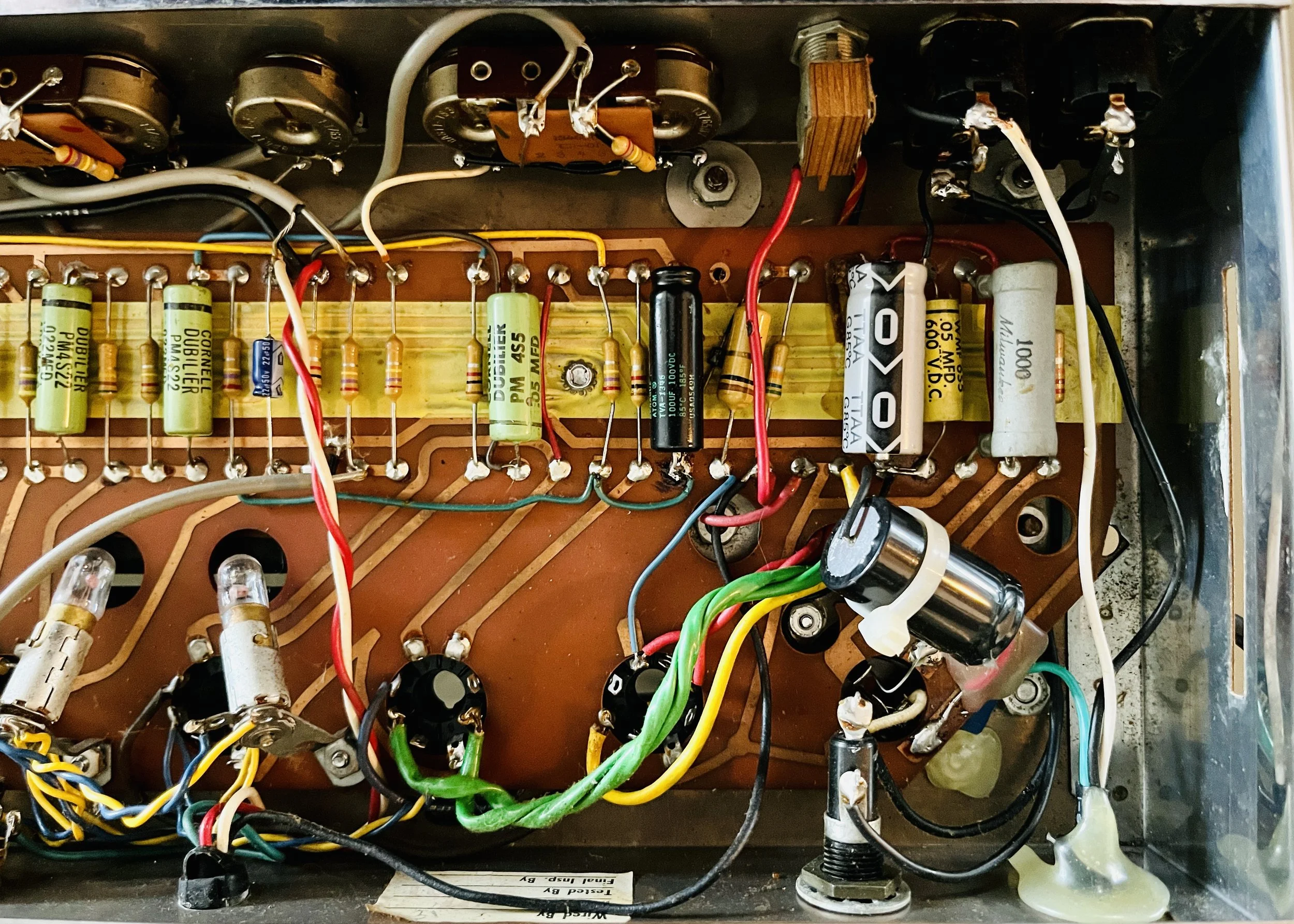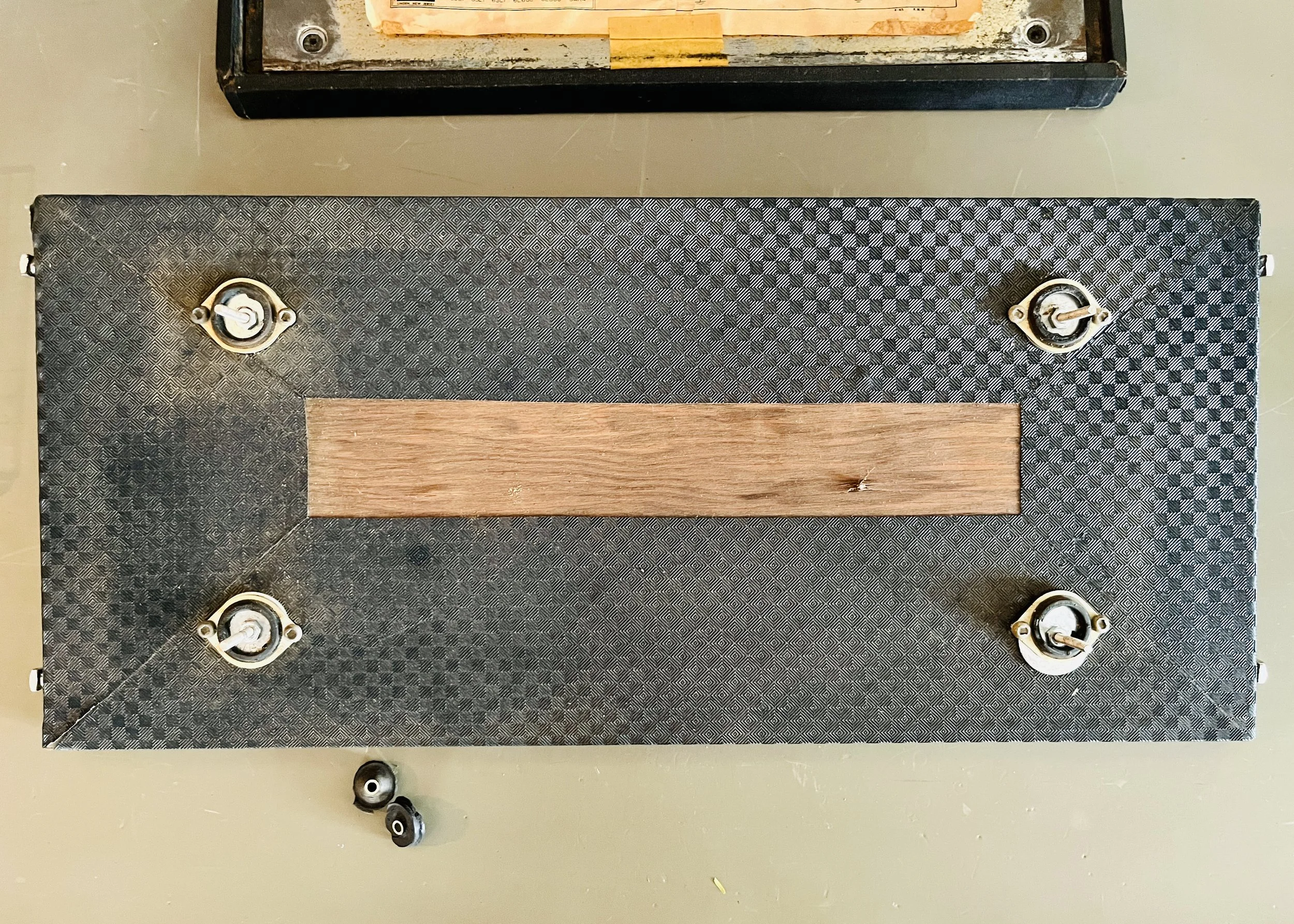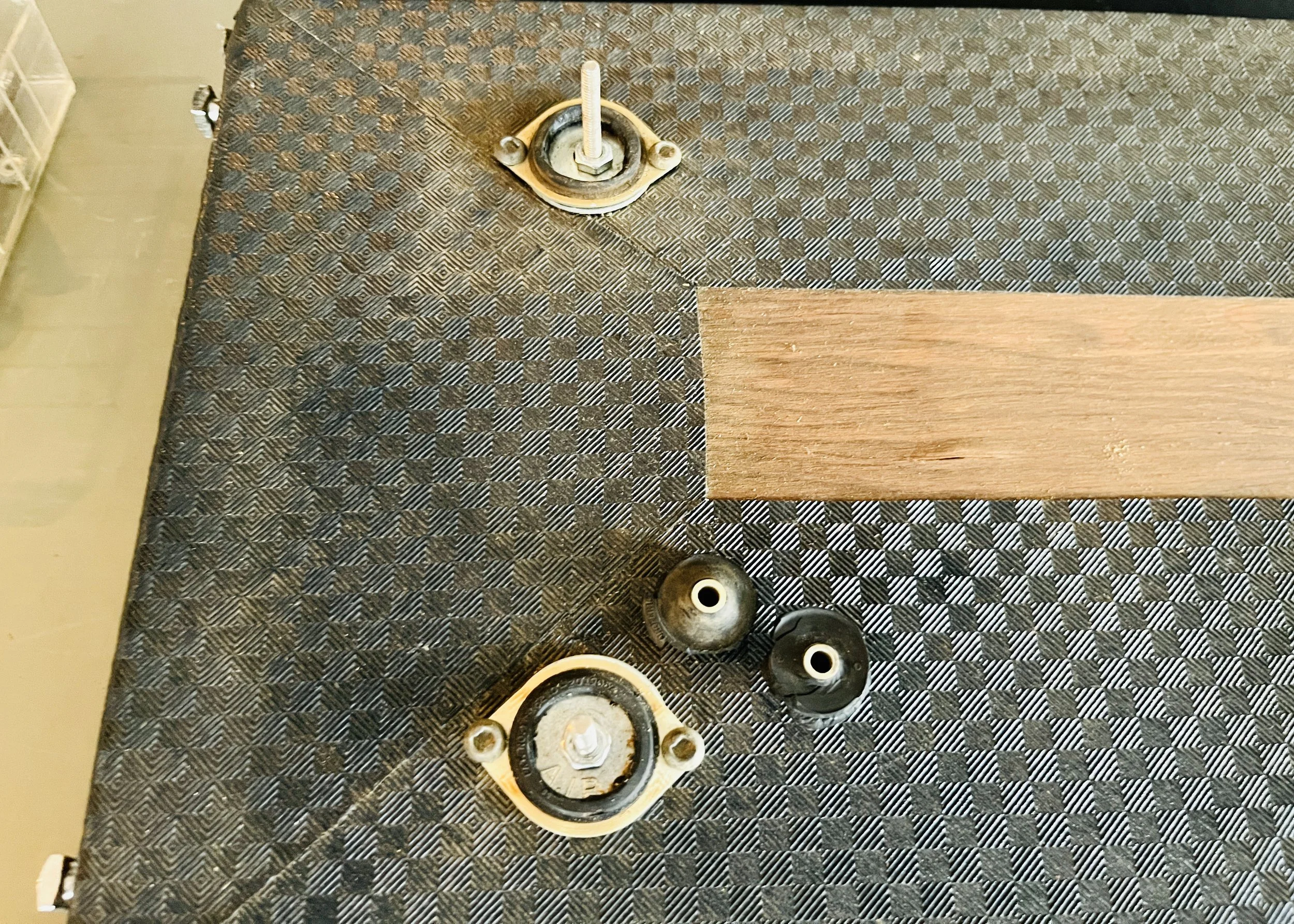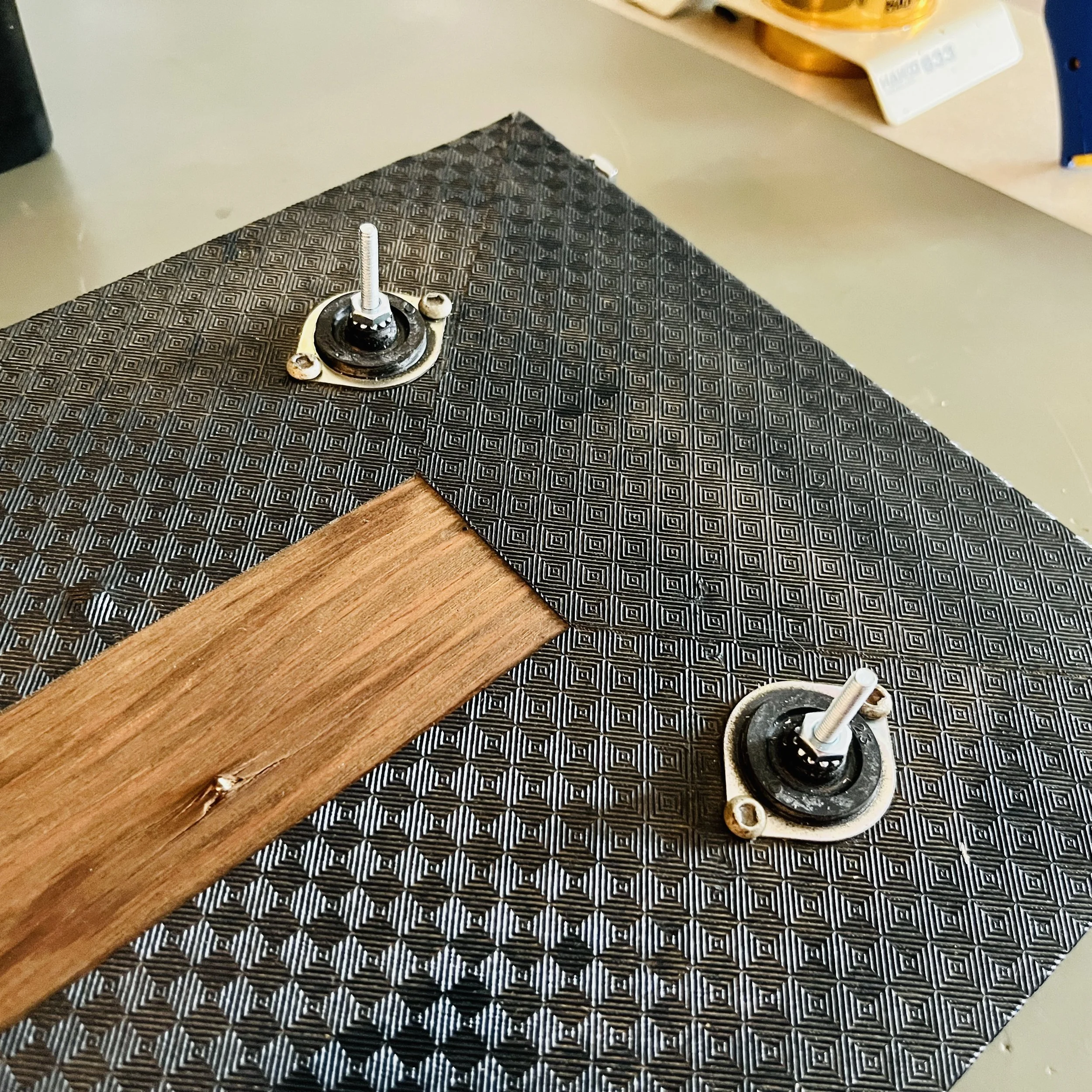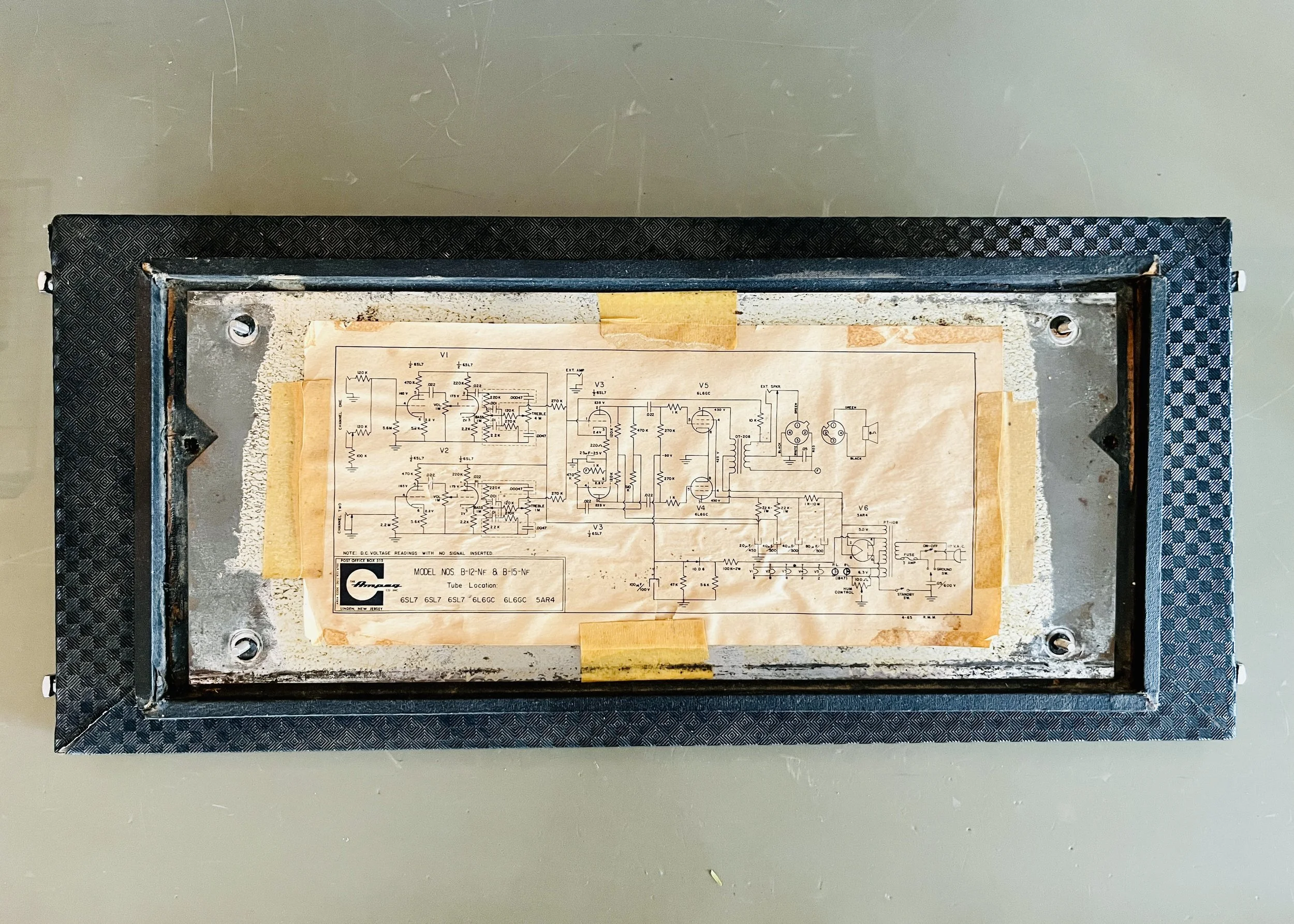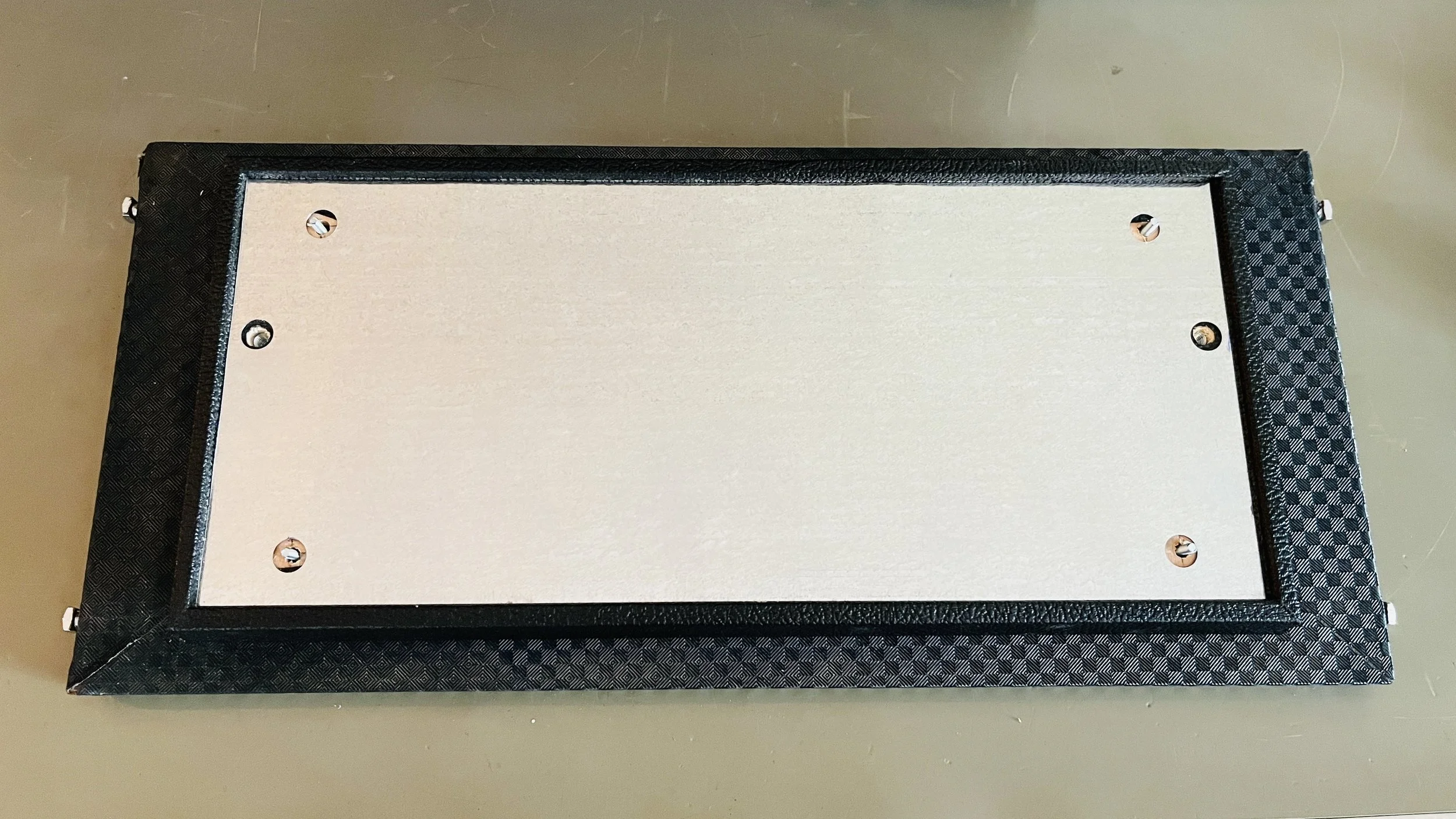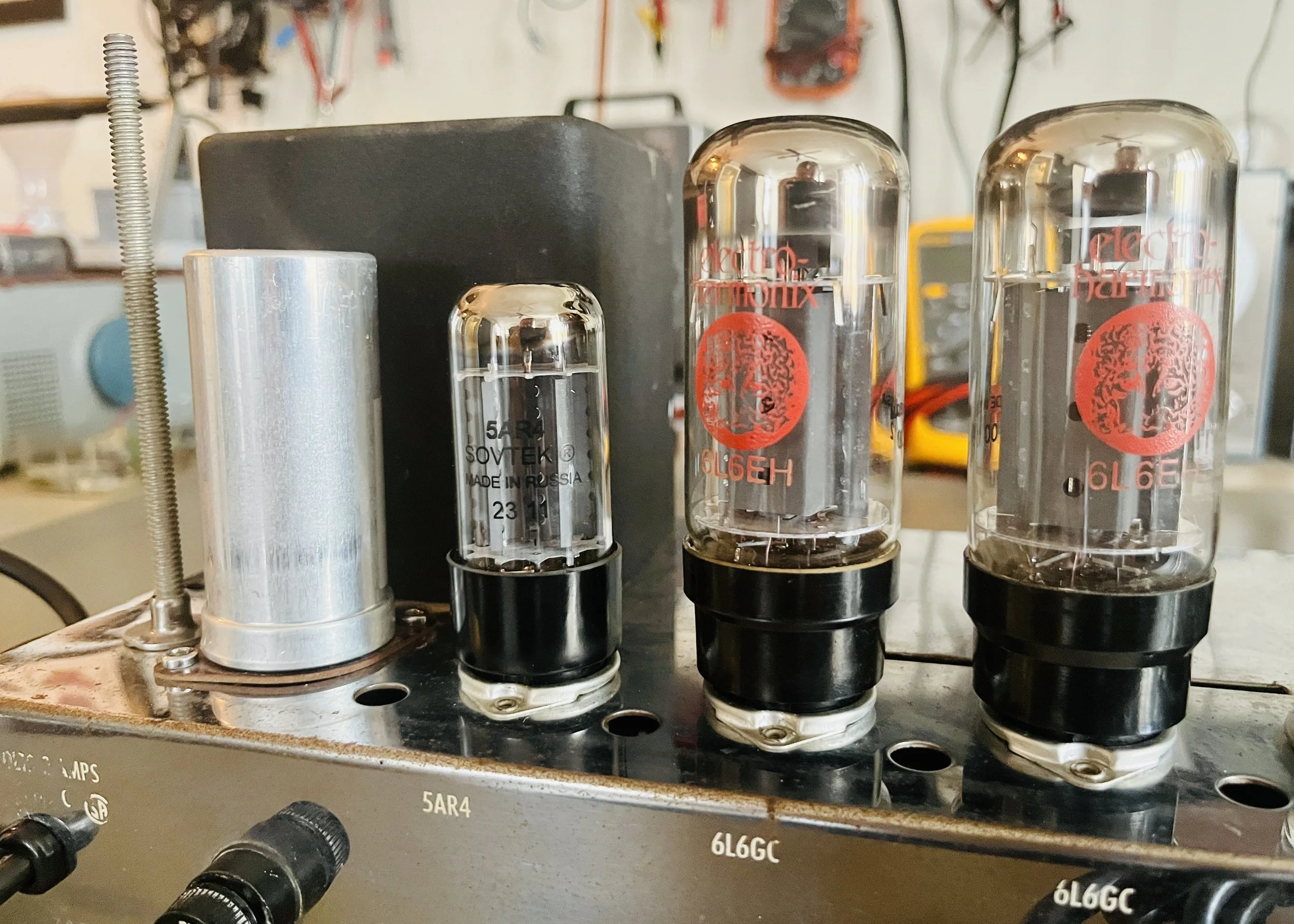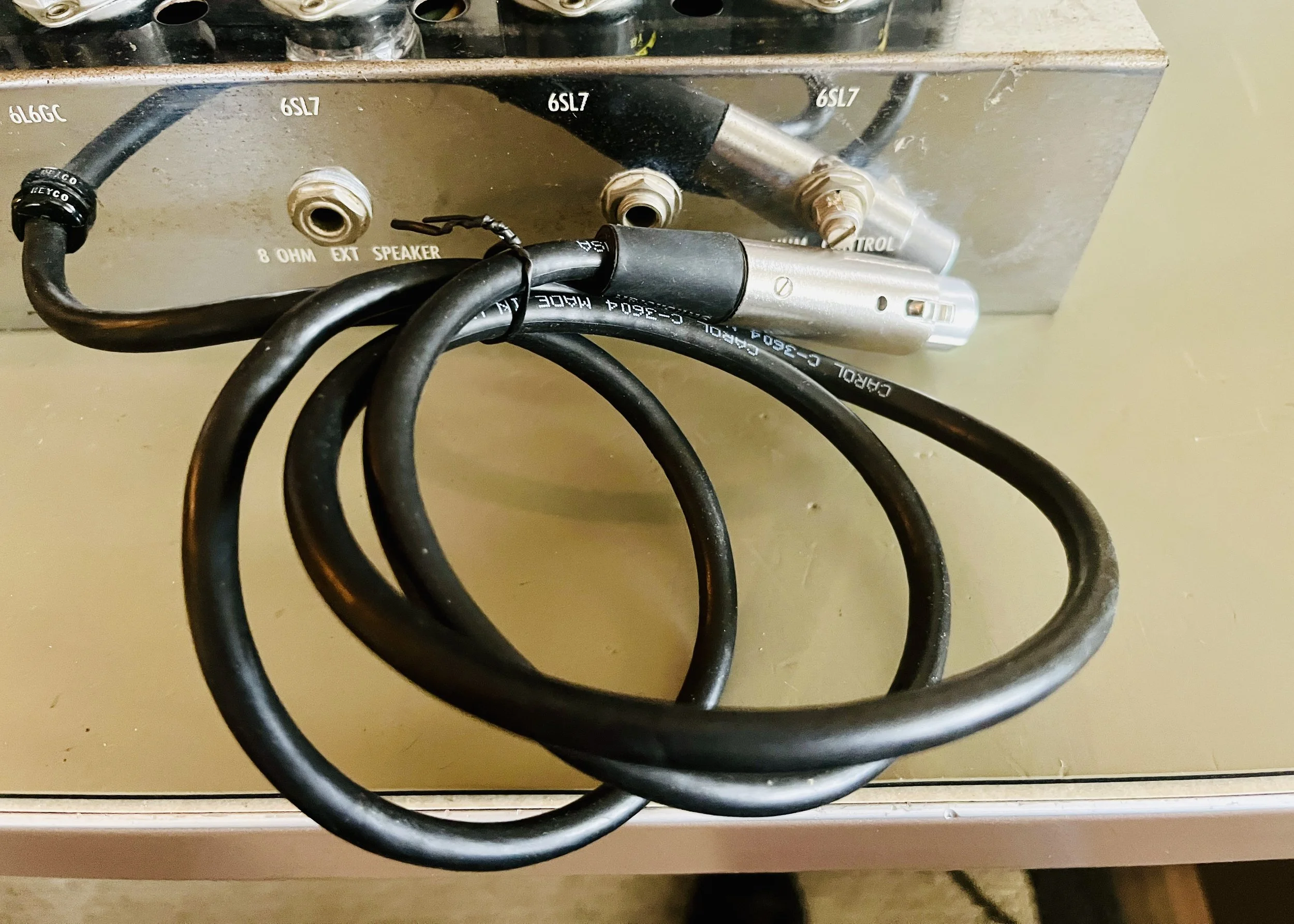1965 Ampeg B-15N
The amp that many people associate with James Jamerson and his Motown/LA Session sound, the B-15 is an all time favorite tube bass amp. Released in 1960 by The Ampeg Company Inc. it quickly took the bass world by storm and became a staple seen on TV performances (like Dick Cavitt) and heard on tons of famous recordings. The B-15 was initially designed in 1958 by Jess Oliver, who is perhaps more well known as the man that put the Spring Reverb effect into guitar amplifiers for the first time. It has a preamp section made with all Octal 6SL7 type tubes, an output section with a pair of 6L6GC power tubes at it’s heart, and is rounded out by a 5AR4 rectifier tube that gives it just a slight amount of sag when pushed. Early models had Cathode Bias and were hand-wired on eyelet boards, later models went on to PCB construction and Fixed Bias output sections (like the one we have here). These amps are notable for their carefully engineered double baffle cab design, the “Portaflex” hide-away head that tucks into the cab during transport, and of course the large single Jensen or CTS brand 15” speaker that they are paired with. Notable Players include: Rick Danko of The Band, John Paul Jones of Led Zepplin (recording mostly), Andrew “Blueblood” McMahon who played with Howlin’ Wolf in his later years, Duck Dunn, and Chuck Rainey.
This amp came in having already been repaired before, however the quality of the work was not great. Most of the necessary preventative maintenance was left undone, and the power supply had been modified in a way that was not original to the schematic and more importantly was not safe. The amp was purchased by the customer online and it had been shipped across state lines, however the packing of the amp was terrible. Because of that, it received a lot of physical damage to the cabinet that also needed repair work, specifically custom made parts from Fliptops.com the Ampeg specialty shop in Buffalo, NY. It needed a cap job, new power/plate/misc. resistors, a new rectifier tube, new chassis tray and shock-mounts, updated speaker cable, and cleaning.
The amp was fully restored and many botched efforts from previous repairs undone and corrected. An almost complete cap job was done excluding the CE brand 40/40/40uf 525v electrolytic cap can, which was kept from a previous repair - all associated parts and wiring to it were redone however. The badly modded power supply was replaced with a schematic correct rebuild including the chassis mounted “fire-cracker” cap which was replaced with a CE brand 25uf 800v unit. All of the paper/foil signal caps were replaced with Mallory brand 150 series polyester film capacitors. The carbon comp and wire-wound power resistors were replaced with upgraded 2 Watt Metal Oxide and 10 Watt Wire-Wound type resistors respectively. New 2 Watt Metal Oxide and 1 Watt Carbon Film type resistors were installed in the bias circuits and plates of the V2 6SL7GT - this was done due to heat damage and out of spec original parts. A 1N4007 1A 1000v diode was installed in the bias circuit for the same reasons. The higher wattage resistors mean better reliability and a lower noise floor. A new 4 pin XLR speaker cable was installed due to the original having been worn out. The death cap was deleted, rendering the polarity switch non-functional.
Most of the original tubes tested good and were left in place - except the rectifier tube which was replaced. Someone had placed a 5U4GB where a very differently rated 5AR4 should have been. The final tube lineup was: V1/V3 = SYLVANIA 6SL7GT, V2 = GE 6SL7GT, V4-V5 = EHX 6L6GC Matched Pair, V6 = SOVTEK 5AR4. The Fixed Bias for the 6L6GC’s was set to %53 Class AB Plate Dissipation with a B+ of 514VDC. The broken Flip-Top lid was replaced with a vintage spec correct reproduction custom made by Fliptops.net in Buffalo, NY. The broken and blown-out shock-mounts holding that tray (upside down in it's locked position) were replaced with custom made versions also from Fliptops. The amp was cleaned, and all the hardware was tightened. Now everything with the amplifier functions great and it’s now a fine example of a 1960’s B-15.



